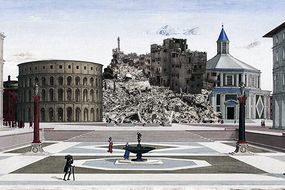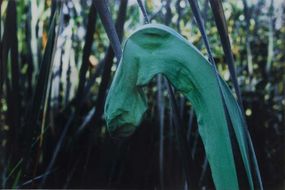From 5 December to 4 May 2025
Accepted the Artsupp Card
The exhibition, open until May 4th, explores her meticulous approach of selection and collection, reworking and reactivating Japanese photographs from the Yokohama school (Yokohama Shashin). The original photographs, collected over twenty years by the artist and exhibited at MAO for the first time, are displayed alongside the works of Linda Fregni Nagler, who rephotographed the original albumen prints, printing them in the darkroom and coloring them by hand using a technique similar to that of the time (1860-1910). This intervention gives new meanings to the images, illustrating the history of a specific way of looking at exoticism and otherness.
The subject investigated at MAO is that of flower sellers (hanauri), a highly appreciated category of street vendors (bōtefuri) in Japan during the Edo and Meiji periods.Considering the influence of ukiyo-e prints on Yokohama Shashin, the exhibition project also aims to contextualize and deepen the connection between Fregni Nagler's photographs and the woodblock prints from a period predating the birth of photography, featuring the same subject.The exhibition will display 26 albumen prints from the mid-19th century, part of the Fregni Nagler collection, along with six large hand-colored silver salt prints by the artist and 4 glass positives visible through two viewers.The floral and vegetal theme is further explored in the precious kesa textiles from the MAO collection dating back to the Edo period, and in the kimonos enriching the exhibition, one from Palazzo Madama and two from the Museum of Oriental Art in Venice, as well as three valuable lacquers and three kakemono scrolls signed by Yanagisawa Kien, Kawamura Bunpō, and Tomioka Tessai (from the Edo and Meiji periods) on loan from a private collection.The rearrangement of the Japanese gallery is part of the MAO exhibition program, which, through loans from collections of Asian art - public and private, national and international - aims to stimulate new reflections and narratives around the Museum's heritage; Hanauri is also part of the #MAOtempopresente project, which uses contemporary art as a means of interpretation and enhancement of collections through the inclusion of contemporary works and site-specific productions created within the residency program active since 2022.In parallel to the exhibition project in the galleries, the three Japanese armors from the collection, dating from the late 17th to the first half of the 19th century, have been rearranged in the setting of the Mazzonis Hall, where they will undergo a public open conservation restoration starting in January 2025.

Via San Domenico, 11, Turin, Italy
Opening hours
| opens - closes | last entry | |
| monday | 10:00 - 18:00 | |
| tuesday | 10:00 - 18:00 | |
| wednesday | 10:00 - 18:00 | |
| thursday | 13:00 - 21:00 | |
| friday | 10:00 - 18:00 | |
| saturday | 10:00 - 18:00 | |
| sunday | 10:00 - 18:00 |
Always
8.00 € instead of 10.00€
There are no ongoing exhibitions.
10.00 € instead of 12.00€

From 11 October to 23 November 2025
Andrea Francolini

The Rooms of Photography, Venice

Artsupp Card: museum + exhibitions 12.00 €

From 9 November to 31 December 2025
Giulia Sale | The ideal city

Museum of Organic Environmental Art, Tempio Pausania

From 29 October to 1 March 2026
Tribute to LOTHAR BAUMGARTEN

GAM - Gallery of Modern Art, Turin, Turin